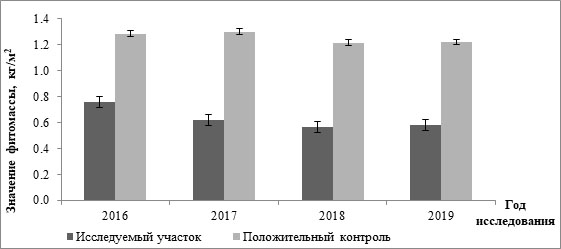Changes in the flora of arable ecosystem on chernozem during the first years after the cessation of agrogenic influence
DOI:
https://doi.org/10.31251/pos.v7i3.275Keywords:
demutation; deposit; postagrogenic change; succession.Abstract
The aim of the study Assessment of the floristic composition dynamics during four years after cessation of agrogenic influence on an long-term ploughed plot of ordinary chernozem at the Botanical Garden of the Southern Federal University.
Location and time of the study. The research was conducted in the botanical garden of the Southern Federal University (Rostov-on-Don) in 2016-2019.
Methods. Geobotanical descriptions were carried out according to conventional methods.
Results. During the first four years of abandonement, the floral composition of the studied area increased from nine plant species in the first year to 48 species due to spontaneous revegetation. In the first year of the postagrogenic regime, Asteraceae were the dominant family (96% of the total number of species). Subsequently, the share of this family decreased by 45% after two years and by 40% after three years. Four years after the start of the experiment, in addition to the Asteraceae family (33.3%), Poaceae (17%), Brassicaceae (4.2%), Apiaceae (4.2%), Polygonaceae (4.2%), Fabaceae (4.2%), Rosaceae (4.2%) prevailed in the community, whereas the remaining families accounted for 29%. The productivity of the abandoned site depended on the season of the study. Compared with the first year of observations, the total phytomass stock decreased by 26% by the fourth year of the postagrogenic regime. The spontaneous revegetation of the abandoned plot led to an improvement in the ecological condition and an increase in the biological activity of the soil.
Conclusions. Abandonement of the arable land resulted in a rapid increase in flora diversity, in the first years mainly due to the Asteraceae family. Phytomass at the abandoned land increased in the first year due to the cessation of ploughing and consequent spontaneous revegetation. Vegetation development led to an improvement of the ecological condition and increased biological activity of the soil.
Downloads

Downloads
Published
How to Cite
Issue
Section
License
Copyright (c) 2024 The Journal of Soils and Environment

This work is licensed under a Creative Commons Attribution 4.0 International License.






